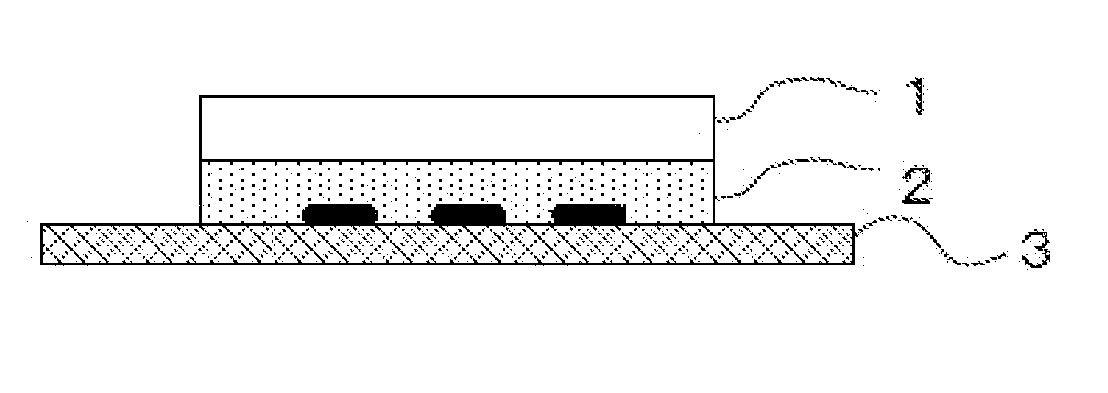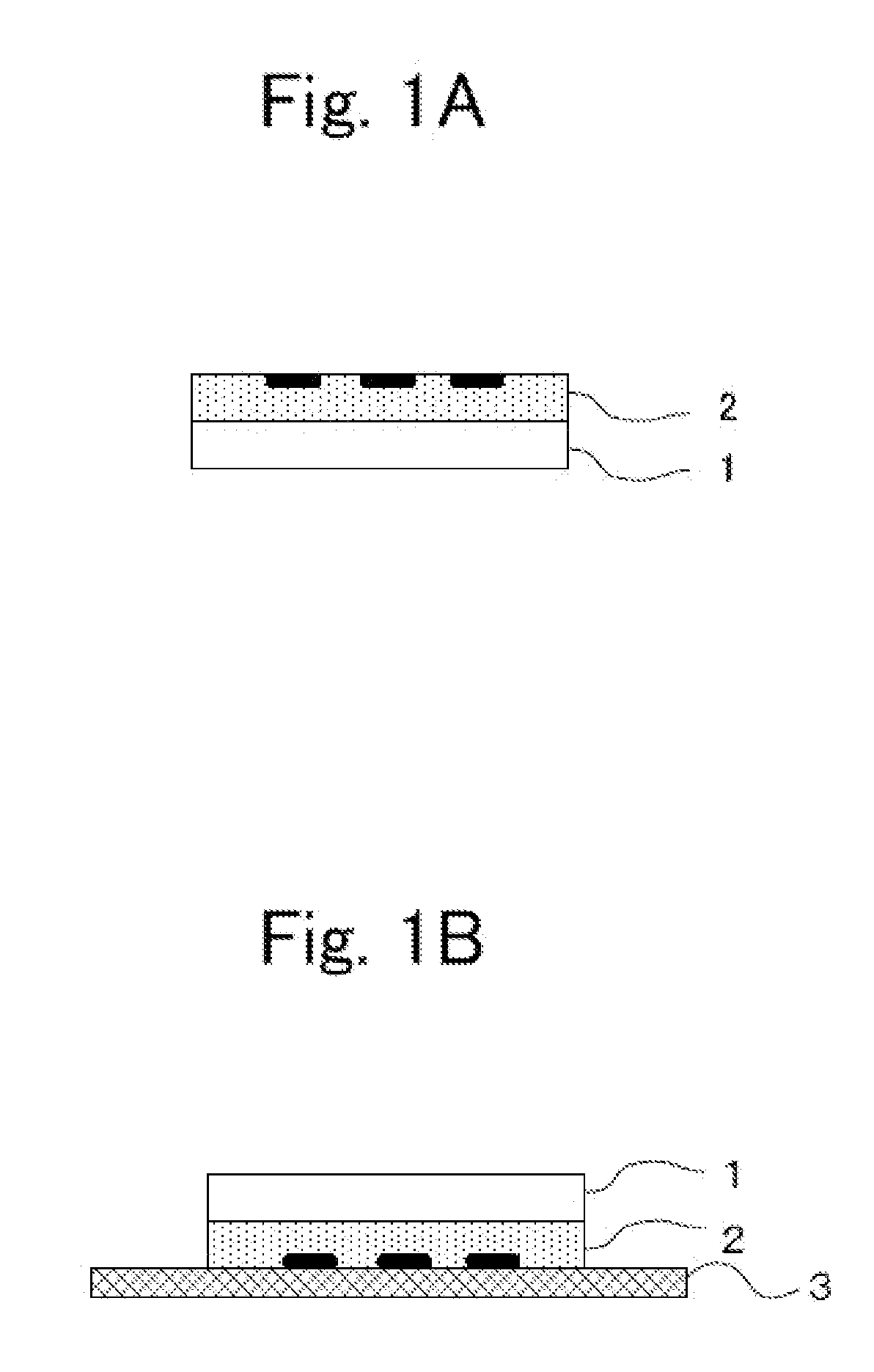Inkjet Recording Material
- Summary
- Abstract
- Description
- Claims
- Application Information
AI Technical Summary
Benefits of technology
Problems solved by technology
Method used
Image
Examples
example 1
[0062] Ethylene oxide was addition-polymerized to ethylene glycol, butylene oxide was addition-polymerized thereto, further, ethylene oxide was addition-polymerized thereto to obtain polyalkylene oxide. And octadecan-1,18-methyl dicarboxylate was added to the obtained polyalkylene oxide for ester exchange reaction, so as to obtain a resin A of weight-average molecular weight 150,000. Then, 1 part by mass of tocophenol (produced by BASF, UVINUL2000AO) was added as a thermal stabilizer to the resin A, (45 parts by mass of the mixture) and 55 parts by mass of a resin B (ethylene-vinyl acetate copolymer (including 15˜40% by mass of vinyl acetate, melting-index 300)) were melt-kneaded by biaxial-kneading extruder; and the melt-kneaded material was melt-molded into 30 μm film by T-type manifold dies; then, it was laminated with biaxial-stretched polyester film (produced by Mitsubishi Polyester Film Corporation, T600E, 50 μm) used as a base layer by nip roll at the same time as the melt-mo...
example 2
[0063] The same operations as in Example 1 were performed to make a laminated film except for adding 0.5 parts by mass benzophenone as a hydrogen abstraction type photo-radical polymeric initiator to the resin A, then radiating light of 3600 mJ / cm2 of single-side accumulated light intensity by high-pressure mercury lamp through the base layer.
example 3
[0064] 45 parts by mass of resin C (porous silica (produced by Mizusawa Chemical Co., Ltd., Mizucasile P78A) was mixed with polyvinyl alcohol (produced by Kuraray Co., Ltd., CP-1000) at the ratio (mass ratio) of 50:50) and 65 parts by mass of the resin B were melt-kneaded by biaxial-kneading extruder. Then, it was melt-molded into 30 μm by T-type manifold dies, and laminated with biaxial-stretched polyester film (produced by Mitsubishi Polyester Film Corporation, T600E, 50 μm) used as a base layer by nip roll at the same time as the melt-molding. Thus, a laminated film for inkjet recording material was obtained.
PUM
| Property | Measurement | Unit |
|---|---|---|
| Percent by mass | aaaaa | aaaaa |
| Percent by mass | aaaaa | aaaaa |
| Melting point | aaaaa | aaaaa |
Abstract
Description
Claims
Application Information
 Login to View More
Login to View More - R&D
- Intellectual Property
- Life Sciences
- Materials
- Tech Scout
- Unparalleled Data Quality
- Higher Quality Content
- 60% Fewer Hallucinations
Browse by: Latest US Patents, China's latest patents, Technical Efficacy Thesaurus, Application Domain, Technology Topic, Popular Technical Reports.
© 2025 PatSnap. All rights reserved.Legal|Privacy policy|Modern Slavery Act Transparency Statement|Sitemap|About US| Contact US: help@patsnap.com



